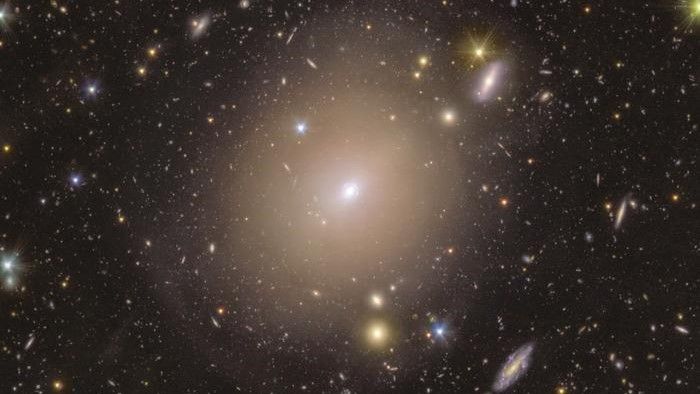
The Euclid Space Telescope has successfully captured a breathtaking and rare phenomenon known as an “Einstein ring,” which magnifies light from the far reaches of the cosmos.
This remarkable image reveals a subtle halo encircling the nearby galaxy NGC 6505, a visual effect caused by the galaxy’s gravitational influence on light emanating from an even more distant galaxy lying behind it.
This phenomenon, recognized as gravitational lensing, was initially theorized by Albert Einstein back in 1915. The extraordinary magnification allows us to observe light from an unnamed galaxy approximately 4.42 billion light-years in the past, even though NGC 6505 is just 590 million light-years away, placing it conveniently within our “cosmic backyard.” The findings of this research were published on February 10 in the journal Astronomy and Astrophysics.
“An Einstein ring represents an instance of strong gravitational lensing,” noted lead researcher Conor O’Riordan from the Max Planck Institute for Astrophysics in Germany. He further emphasized, “All strong lenses are remarkable due to their rarity, and they hold immense scientific value. This particular ring is extraordinary because of its proximity to Earth, which enhances its beauty.”
Unveiling the Universe
Einstein’s theory of general relativity explains how massive entities distort the universe’s fabric, known as space-time. Einstein uncovered that gravity arises not from an invisible force, but from the curvature and distortion of space-time caused by matter and energy.
Related: The Mysterious ‘Green Monster’ Discovered in James Webb’s Supernova Photo Explained
This curvature of space dictates the trajectories of energy and matter. While light typically travels in a straight path, it can curve around massive galaxies, creating a halo effect due to the gravitational field surrounding them.
The recent image was obtained from data gathered by the Euclid Space Telescope during its initial testing phase in September 2023. Launched on July 1, 2023, Euclid aims to capture wide-field images that will aid astronomers in studying two of the universe’s enigmatic components: dark matter and dark energy. Scientists estimate that these two elements make up about 95% of the universe, yet they do not interact with light and remain undetectable by conventional means.
To study them, astronomers analyze their indirect effects on the visible universe: Dark matter is inferred from its gravitational influence on galaxies, while dark energy is identified by its effects on the accelerated expansion of the universe.
Astronomers have cataloged hundreds of Einstein rings, but their significance extends beyond their aesthetic appeal. The unique light magnification allows scientists to reconstruct the light into its original form, enhancing the visibility of details in very distant galaxies. Moreover, as the degree of light bending correlates with the strength of the gravitational field, Einstein rings serve as valuable tools for estimating the masses of galaxies and black holes, including the amount of dark matter contained within them.
“I find it fascinating that this ring was detected around a well-known galaxy first cataloged in 1884,” remarked Valeria Pettorino, a project scientist for Euclid. “Despite its long history in astronomy, this ring had never been previously observed. It illustrates Euclid’s powerful capabilities, unveiling new findings even in well-explored regions. This discovery is incredibly promising for the future of the mission.”
Currently, Euclid is in the midst of its six-year mission to map a third of the night sky by collecting thousands of wide-angle images. In total, Euclid is set to capture light from over a billion galaxies, some of which date back 10 billion years, according to the European Space Agency.
Upon completion, astronomers will utilize Euclid’s imagery to produce two comprehensive maps: one illustrating the gravitational lensing of galaxies to reveal dark matter concentrations, and the other illustrating shock waves known as baryon acoustic oscillations, which can help trace dark energy.









